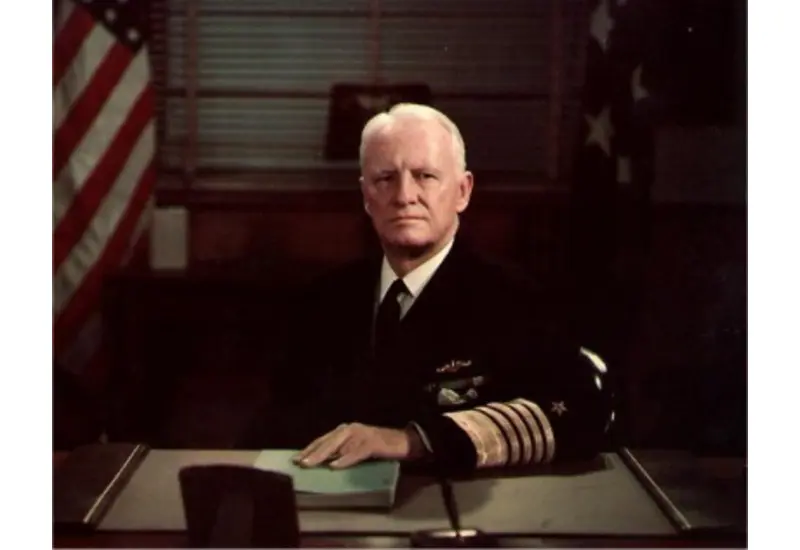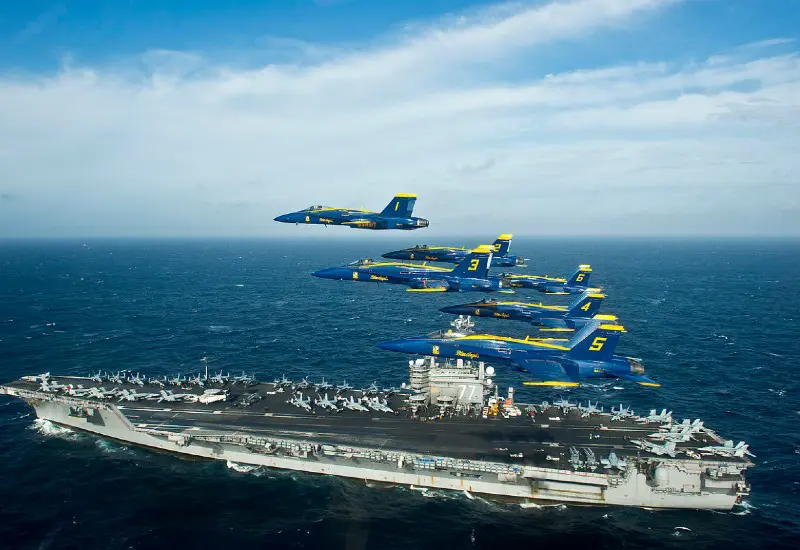7 Fun Facts to Know Before You Go to the Blue Angels Show
Where is the best place to watch the Blue Angels Practice and are they flying today?
Best Place to Watch Answer: FROM . THE . WATER Hear the engines ROAR…feel the vibration and let the smoke trail guide your path to follow our Hometown U.S. Navy Blue Angels.
Watch the Blue Angels From the Water:

Watch The Blue Angels Practice from the water while sightseeing on a dolphin cruise in Pensacola on Frisky Mermaid
Compliments of the Pearl Harbor Aviation Museum, (2021, Feb. 5):
7 Fun Facts about the Blue Angels.
1. THE TEAM WAS ESTABLISHED BY ONE OF AMERICA’S GREAT NAVAL HEROS
 At the end of World War II, naval hero and Chief of Naval Operations Admiral Chester W. Nimitz, ordered the formation of a flight demonstration team to keep the public interested in naval aviation and to boost Navy morale. The team was established on April 24, 1946, and performed its first flight demonstration on June 15, 1946, at its home base, Naval Air Station (NAS) Jacksonville, Florida, flying the Grumman F6F Hellcat.
At the end of World War II, naval hero and Chief of Naval Operations Admiral Chester W. Nimitz, ordered the formation of a flight demonstration team to keep the public interested in naval aviation and to boost Navy morale. The team was established on April 24, 1946, and performed its first flight demonstration on June 15, 1946, at its home base, Naval Air Station (NAS) Jacksonville, Florida, flying the Grumman F6F Hellcat.
2. THE SMOKE TRAIL ENHANCES SAFETY 
If you’ve ever seen the Blue Angels fly, you’ve likely noticed the trail of smoke left behind by the aircraft. The non-hazardous smoke is produced by pumping biodegradable, paraffin-based oil directly into the exhaust nozzles of the aircraft, where the oil is instantly vaporized into smoke.
Not only does the smoke provide a path for spectators to follow, it also enhances safety of flight by allowing solo pilots to see each other during opposing maneuvers and conditions of lowered visibility.
3. THE HORNETS FLY AS CLOSE AS 18 INCHES APART
During the Diamond 360 maneuver, the Hornets will fly just 18 inches apart from each other! In the maneuver, Blue Angels #1 leads a pack of four who fly closely – just 1 ½ feet from each other – in a diamond shape. In fact, it’s so close, that in 2019 two jets touched while practicing a Diamond 360. There were no injuries and no damage to the aircraft, other than a small scratch.
4. THE F/A-18 CAN REACH SPEEDS JUST UNDER MACH 2
That’s almost twice the speed of sound or about 1,400 mph! During an airshow, however, the Hornet flies at about 700 mph (just under Mach 1 — the speed of sound — for the sneak pass maneuver) at its fastest.
5. ALL THE BLUE ANGELS ARE CARRIER CAPABLE
Each Blue Angel aircraft is capable of being returned to combat duty aboard an aircraft carrier within 72 hours!
There are only a few differences between the Blue Angel Hornets and the fleet model: The Blue Angel F/A-18s have the nose cannon removed, a smoke-oil tank installed, and a spring installed on the stick which applies pressure for better formation and inverted flying. Otherwise, the aircraft that the squadron flies are the same as those in the fleet.

6. THE F/A-18 HORNET HAS SERVED AS THE DEMONSTRATION AIRCRAFT FOR 34 YEARS
The Blue Angels began flying the Boeing F/A-18 Hornet in 1986, on the team’s 40th Anniversary. On November 4, 2020 they conducted their final flight with the legacy F/A-18 C/D Hornets over Pensacola, Florida, marking the end of its service life with the flight demonstration team. The Hornet is the Blue Angel’s longest serving demonstration aircraft.
7. THE BLUE ANGELS TRANSITION TO THE SUPER HORNET IN 2021
The Super Hornet is 25 percent larger, can fly 40 percent further, remain on station 80 percent longer, and carry more weapons than its predecessors. The Super Hornet F/A-18 E/F models have deployed with battle groups since 2001.
 The Blue Angels plan to kick off its 75th season with the Super Hornet starring in the 2021 year’s first air show at Naval Air Station Jacksonville, Florida. The Blue Angels are slated to appear at a total of 30 locations throughout the year.
The Blue Angels plan to kick off its 75th season with the Super Hornet starring in the 2021 year’s first air show at Naval Air Station Jacksonville, Florida. The Blue Angels are slated to appear at a total of 30 locations throughout the year.
- 4 & 8 hour
- Tritoon
Rent a pontoon boat and explore our waters on your own schedule. We have four hour pontoon boat rentals, six hour pontoon boat rentals, eight hour pontoon boat rentals and Multi-day pontoon boat rentals. Captain your own adventure and search for dolphins, local birds & other marine life.
- All Ages
- 2 hours
Sit back, relax and enjoy some vitamin sea and d while your local Captain guides you around our waters to look for marine and wildlife. Check out The Gulf Island National Seashore and other historic sights from the water or just cruise and chill!
- All Ages
- 2.5 hours
3 ways to watch gravity-defying aerial stunts & dolphins for a match made in coastal paradise. On select Tues. and Wed. @ March – September with a Homecoming in Nov. this will be an adventure of epic proportions. The Blue Angels practice begins @10:30am for up to 50 min.
